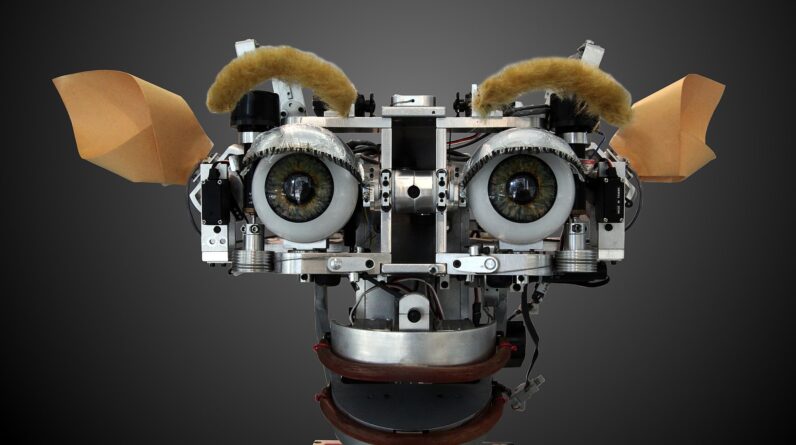
[ad_1]
MIT Museum: Kismet, a robot head which was made in the 1990s. By Rama, CC BY-SA 3.0 fr
University of Sydney researchers have developed an AI-assisted application that can aid people to write cartoon captions for cartoons published in The New Yorker Cartoon Caption Contest.
In a test study, twenty participants, who had no experience writing cartoon captions, wrote 400 cartoon captions.
For this exercise, 200 captions were written with the help from the AI tool, and the remainder were written without assistance. A second group of 67 people then rated how funny these cartoon captions were.
The researchers found jokes written with the help of the tool were found to be significantly funnier than those written without the tool (of course the ratings were subjective).
Comparatively, ratings for the AI assisted captions were almost 30 percent closer to the winning captions in The New Yorker Cartoon Caption Contest.
When questioned afterwards, the participants said the tool helped them piece together humorous narratives and get started, helping to understand nuances and funny elements, and to come up with new ideas.
 New Yorker / University of Sydney AI exercise, with permission.
New Yorker / University of Sydney AI exercise, with permission.
With the above cartoon, the original caption was: “”It’s not just Henderson. Corporate laid off the entire bunny division.”
Whereas, the AI-assisted caption became: “I meant the rabbit soup, not suit.”
Another interesting finding was that almost half, 95 out of the 200 jokes written with the help of AI were also rated as funnier than the original cartoon captions by The New Yorker.
“The AI tool helps people be significantly funnier, but more importantly, it may be a cure for writer’s block,” said Dr Anusha Withana from the School of Computer Science in a research note.
The serious point behind the AI application was to help to develop a tool that can help non-native speakers understand humour in their new language. The results also showed non-native speakers found the tool more helpful, bringing them 43 percent closer to the winning caption.
The aim behind this is to help with integration in a new culture and society, with humour being an important way to relate to others. This also aids emotional wellbeing and creativity.
The tool works through an algorithm which assesses incongruity. It analyses the words in a description of the cartoon and generates incongruous words as hints for the cartoonist.
The research is titled “Appropriate Incongruity Driven Human-AI Collaborative Tool to Assist Novices in Humorous Content Generation” and it was presented to the Association for Computing Machinery Conference on Intelligent User Interfaces – IUI 2024 conference on 22 March, 2024.
[ad_2]
Source link






